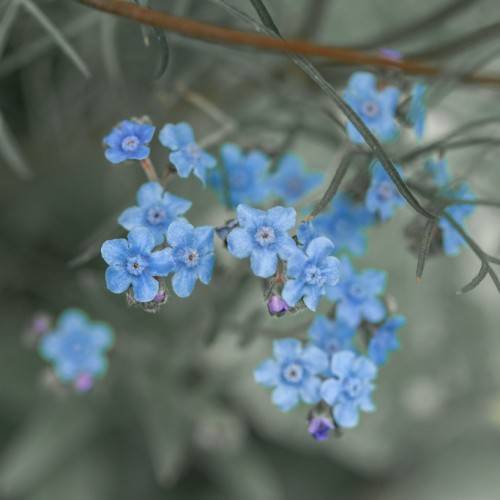
Chinese forget-me-not
Cynoglossum amabile
Cycle:
Herbaceous Perennial
Watering:
Average
Hardiness Zone:
6 - 9
Flowers:
Flowers
Sun:
Full sun
Leaf:
Yes
Growth Rate:
Low
Maintenance:
Low
Drought Tolerant:
Yes
Salt Tolerant:
Yes
Invasive:
Yes
Care Level:
Medium
watering
Chinese forget-me-nots should be watered thoroughly when the top 1-2 inches of the soil are dry. In addition, they should be watered more frequently in warmer months, and less frequently in cooler months. If the soil remains damp or looks waterlogged, the plant does not need to be watered. Chinese forget-me-nots should not be over-watered, as this can lead to root rot.
sunlight
Chinese forget-me-not plants require full to partial sun and a minimum of 8 hours of direct sunlight per day. The more sun they get, the better. When planted in a sunny spot in the garden, or when placed outdoors during the summer months, they will bloom more profusely. However, they must be protected from the intense, hottest midday sun as this will burn the delicate blossoms. If placed outdoors, light shade during the afternoon will help protect the blooms from being scorched by too much sun.
pruning
For Chinese forget-me-not (Cynoglossum amabile), pruning should be done regularly, once in late spring and then again in early summer. The first pruning should be done just after flowering, and should be focused on removing any crossed branches or diseased or dead growth. The second time should be focused on thinning, shaping, and improving the overall structure of the plant, taking care to not remove too much of its foliage. When pruning, try not to cut off the old wood entirely, as this species is known for flowering from both new and old wood. Removing more than a third of the old, woody stems is generally not recommended.
